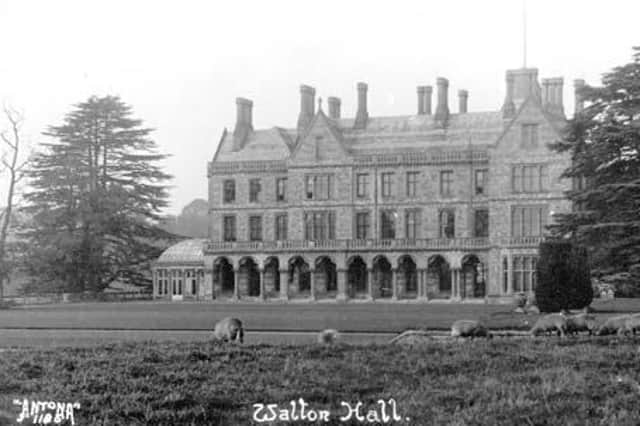Local history: Recounting the shooting at Walton Hall in Warwickshire


Peter Bowen, 83, is a retired journalist who writes a regular column for The Courier and Weekly News. Here is his latest column on Walton Hall.
Should Prince Andrew appear in court in America later this year, which is unlikely, he will not be the first Royal to have appeared in open court to give evidence in proceedings widely reported in the Press. The Prince of Wales made an appearance in a London divorce court in 1870 to deny allegations of adultery.
Advertisement
Hide AdAdvertisement
Hide AdThe sensational scandal delighted gossip writers and avid readers of the ‘wrong doings’ of gentry in the fashionable Marlborough set. Walton Hall and Warwick Castle were favoured locations by celebrities and courtiers for enjoyable social parties at the time.
Events came to a head when the aggrieved husband Sir Charles Mordaunt shot two white ponies, a gift to his wife Harriet from “Bertie” Prince of Wales, in front of her at their home at Walton Hall in 1868. The Prince (28) had been shown off the premises only minutes earlier despite claims that the relationship was purely platonic. Sir Charles, who had been away in Normandy on a fishing trip, returned home early to Walton Hall to see Harriet and Bertie riding on a carriage around the family estate with the two white ponies. Harriet was pregnant. There had been rumours of an affair involving the couple for a little while.
Bertie’s close friendship with any number of notable women in and around the Marlborough set gave him the reputation in the London Press of being the “Playboy Prince” Daisy, the Countess of Warwick’ was a leading celebrity socialite in the group. She became Bertie’s long-term confidante and mistress. Bertie, later to become King Edward the Seventh, absolutely devastated his mother, Queen Victoria, by giving evidence for seven minutes denying adultery in a Mordaunt v Mordaunt divorce case. Divorce was considered a major failing at the time, offenders were ostracised by friends and denied any access to social events.
Fortunately for Bertie, behind the scenes, loyal courtiers were at work claiming that Harriet suffered puerperal mania after the birth of her daughter,Violet, thinking she was born blind. Experts said her illness meant that any evidence she gave could not be trusted and the divorce court dismissed the case. Poor Harriet spent the rest of her life in asylums, dying in 1906.
Advertisement
Hide AdAdvertisement
Hide AdSir Charles found letters from the Prince of Wales in Harriet’s desk drawer at Walton but he finally got his divorce in 1875 because Lord Cole confessed in court to his affair with Harriet. Cole was the father of daughter Violet, who regained her sight.
In the 1860s there was a culture of sleeping around amongst celebrities but in fairness, Daisy was later recognised as a campaigning socialist, supporting many projects to help the less well-off in education, housing, employment and pay.
She was married to Lord Brooke, heir to the fourth Earl of Warwick. She used her position to found colleges for women in education and agriculture.
Bertie, on the other hand, was notorious for his affairs with other women including Lily Langtry, Lady Randolph Churchill, actress Sarah Bernhardt, Lady Susan Vane Tempest, singer Hortense Shneider and Alice Keppel. Of interest is Keppel’s great granddaughter, Camilla Parker-Bowls, became mistress but later wife of Charles, Princess of Wales.